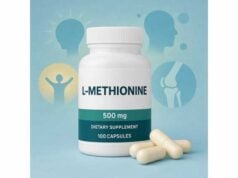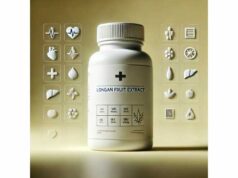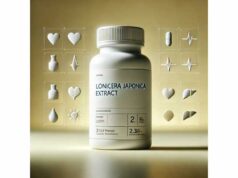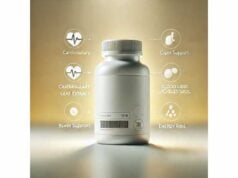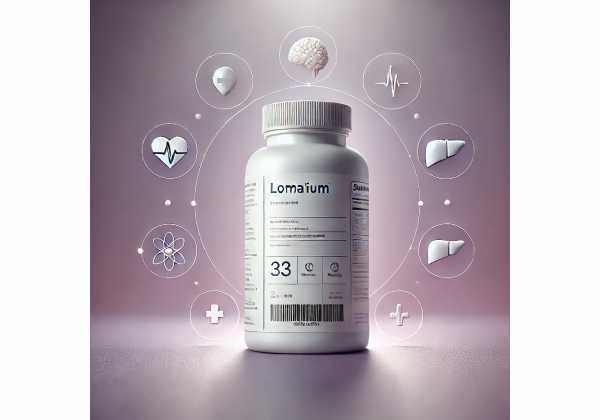
Lomatium (often Lomatium dissectum), also called fernleaf biscuitroot or desert parsley, is a hardy Apiaceae plant native to western North America. For generations, Indigenous communities prepared its aromatic roots as teas, steams, and poultices for coughs, chest congestion, and skin concerns. Today it appears in tinctures and capsules promoted for respiratory wellness and seasonal immune support. What makes Lomatium interesting is its rich profile of resinous compounds (notably furanocoumarins and related phenolics) that may help modulate inflammatory signaling and hinder certain viruses in lab settings. Still, modern clinical evidence in humans is limited, and a distinctive whole-body, itchy rash can occur in some people who take it. This guide explains what Lomatium is, how it is used, what we know (and do not know) from research, practical dosing considerations, and safety red flags—so you can weigh potential benefits against risks with a clear, grounded view.
Quick Overview
- May support upper respiratory comfort and normal mucus clearance; lab data show activity against select viruses.
- Can reduce CXCL10 (an inflammatory chemokine) in cell models, suggesting an immunomodulatory angle rather than direct antiviral only.
- Typical retail servings provide ~200–500 mg dried root equivalent or ~0.5–1 mL tincture; follow product directions and start low.
- Known safety caveat: a self-limited, pruritic, whole-body “Lomatium rash” can appear within 1–3 days of first use in sensitive individuals.
- Avoid if pregnant or breastfeeding, in children, with photosensitivity disorders, or when taking medications that increase sun sensitivity.
Table of Contents
- What is Lomatium and how does it work?
- What benefits are realistic?
- How should I use Lomatium day to day?
- What dose, form, and timing make sense?
- What are the risks and who should avoid it?
- What does the evidence actually show?
What is Lomatium and how does it work?
Lomatium is a perennial herb in the carrot family that grows across the Intermountain West. Herbal preparations use the thick taproot, which contains aromatic resins and a suite of coumarins and furanocoumarins—classes of molecules plants make for defense. In traditional practice, the root was simmered into a decoction, inhaled as steam for chest complaints, applied as a poultice to the skin, or chewed for sore throats. Contemporary products concentrate the root into fluid extracts (tinctures) and powders.
From a mechanism standpoint, think of Lomatium less as a single-target agent and more as a multi-pathway botanical:
- Barrier and secretions support: Aromatic resins can feel “drying” and expectorant, helping loosen and move thick mucus.
- Immune signaling modulation: In human bronchial cell models, Lomatium dissectum aqueous root extract has been shown to reduce secretion of CXCL10, a chemokine associated with outsized inflammatory responses during severe viral illness. That suggests a potential for tempering “too much” immune signaling rather than broadly suppressing it.
- Antiviral activity in vitro: Extracts have inhibited the cytopathic effects of certain viruses (for example, rotavirus) in cell assays at non-toxic concentrations. In vitro results don’t guarantee human benefits, but they help explain traditional use during seasonal respiratory outbreaks.
- Phytochemical “synergy”: Lomatium’s profile is not one molecule; coumarins, flavonoids, tetronic acids, and essential oil constituents likely act together. Some coumarins, however, can also sensitize skin to sunlight (a key safety point covered later).
Because most modern data come from laboratory and ethnobotanical sources rather than controlled human trials, it’s best to frame Lomatium as a traditional respiratory herb with plausible biological actions that merit careful, personalized use—not as a proven treatment for any infection. If you’re considering it for wellness or seasonal support, the next sections explain practical use, limitations, and safety in plain terms.
What benefits are realistic?
When sorting claims about any herb, it’s helpful to separate reasonable expectations from wishful thinking. For Lomatium, evidence is strongest around tradition, plausible mechanisms in cells, and case observations—while high-quality human trials are lacking. Here’s what that means for you:
Respiratory comfort during seasonal challenges
Users often describe easier breathing, thinner mucus, and less chest “heaviness” when they take Lomatium at the first sign of seasonal respiratory discomfort. This aligns with its aromatic, resin-rich profile and long history of use for coughs and congestion. If you’re after general respiratory ease, Lomatium might be one option among several (others include thyme, ivy leaf, or pelargonium), used short-term and alongside rest, hydration, and medical care when needed.
Immunomodulatory support (not an “immune booster”)
In airway cell models, Lomatium dissectum root extract reduced CXCL10, a signaling molecule linked to more severe outcomes in certain viral scenarios. Practically, people reach for Lomatium not to “rev up” immunity but to help the body avoid runaway inflammatory cascades when fighting off seasonal viruses. This is nuanced: dialing down a specific chemokine in vitro doesn’t prove symptom relief in vivo, but it does suggest a mechanism worth further study.
Antiviral activity in the lab
Older screening work found Lomatium extracts could block the damaging effects of some viruses in cell cultures. This contributes to its reputation as a botanical with antiviral potential. It doesn’t prove clinical efficacy, yet it supports cautious, short-term use for upper respiratory tract complaints when professional care is ongoing or if symptoms are mild and self-limited.
Skin and topical use (historical)
Poultices and root oils were traditionally applied to minor cuts, sores, and irritated skin. Modern users sometimes apply diluted tinctures or salves to small areas. If you try topical use, patch-test first, avoid sun exposure on treated skin due to photosensitizing coumarins, and stop at any sign of irritation or rash.
What benefits are unlikely or unproven?
Grand claims—rapid cures for severe infections, long-term “immunity boosts,” or multitarget action against unrelated conditions—go beyond the evidence. Also, using Lomatium as a standalone approach for serious respiratory illness is not appropriate; medical evaluation is essential if symptoms escalate, persist beyond a few days, or involve high fever, shortness of breath, chest pain, or dehydration.
Bottom line: Expect modest, adjunctive support for upper respiratory comfort and a mechanistic rationale for tempering certain inflammatory signals. Do not expect a cure-all effect, and keep safety considerations in view.
How should I use Lomatium day to day?
Choose a reputable product. Look for brands that share plant species (ideally Lomatium dissectum), plant part (root), extraction ratio (for tinctures), solvent (often alcohol–water), and approximate dried-herb equivalent per serving. Because potency can vary with soil, harvest time, and extraction method, start with conservative amounts and note how you feel over 24–48 hours.
Match the form to your goal.
- Tincture/fluid extract: Fast to absorb, easy to split into small test doses. Useful at the first tickle in the throat, alongside warm fluids.
- Capsule/powder: Handy if you avoid alcohol or dislike the taste. Note that “mg per capsule” should refer to dried root equivalent or standardized extract; if unclear, contact the manufacturer.
- Tea/decoction: Traditional and budget-friendly—simmer sliced root gently for 15–20 minutes and strain. Flavor is aromatic and slightly bitter.
- Topical (spot-use): Dilute preparations and patch-test; avoid UV exposure on treated skin.
Use patterns people commonly follow (not medical advice):
- For mild, short-term respiratory support, many start with a small trial dose once or twice on day one (for example, half the labeled tincture serving or one capsule), watch for rash for 24–48 hours, then step up to the label serving if tolerated, for a few days only.
- For ongoing prevention, Lomatium is not ideal; rely on sleep, nutrition, vaccines where appropriate, and hand hygiene. Lomatium is best reserved for short windows when you feel you’re “coming down with something.”
Stack wisely. If you take other botanicals (e.g., elderberry, thyme, or pelargonium) or over-the-counter meds, introduce only one new product at a time so you can attribute any benefit—or side effect—accurately.
When to stop and seek care. Stop immediately if you develop a generalized itchy rash, hives, swelling, trouble breathing, dizziness, or signs of photosensitivity. Seek medical evaluation for worsening cough, high or persistent fever, chest pain, shortness of breath, confusion, severe dehydration, or symptoms lasting more than a few days.
What dose, form, and timing make sense?
There is no standardized, clinically validated human dose of Lomatium. Product strengths vary, and most guidance comes from traditional practice and manufacturer directions. The safest approach is to follow the label of a reputable product, start at the low end, and limit self-directed use to short periods. Still, it’s helpful to understand the ranges you’ll see on shelves:
Typical retail ranges
- Tincture/fluid extract: Common labels suggest ~0.5–1 mL per serving (about 10–30 drops depending on dropper), taken up to 2–3 times per day for several days. Some extracts are stronger (e.g., 1:2 or 1:3 herb:solvent); others are 1:5. Adjust expectations accordingly.
- Capsules: Many provide ~200–500 mg dried root equivalent per capsule, taken once or twice daily for a few days.
- Tea/decoction: Traditional preparations often used a small handful of sliced root simmered in water; in home settings this translates to ~1–2 g dried root in 250–300 mL water, once or twice daily for a short period. Potency depends on cut size and simmer time.
Timing tips
- Take with warm fluids and stay hydrated; aromatic roots pair well with honey-lemon tea if you’re not avoiding sugar.
- For sensitive stomachs, take with a light snack.
- Because of possible photosensitization, avoid sunbathing or tanning beds during use, and use sunscreen on exposed skin if you’ll be outdoors.
Dosing strategy for the cautious
- On day one, take ¼–½ of the labeled serving once.
- Wait 24 hours to check for a diffuse, itchy rash.
- If tolerated, increase to the label serving for another 24–48 hours.
- Continue only if clearly helpful and well tolerated, then stop after a few days. For persistent symptoms, seek clinical advice rather than escalating dose.
What not to do
- Do not combine multiple high-dose products (tincture plus high-potency capsules) to “force” an effect.
- Do not use long-term for general prevention.
- Do not give to children, or use in pregnancy or while breastfeeding, unless a qualified clinician advises and monitors.
What are the risks and who should avoid it?
The “Lomatium rash.” A well-recognized, whole-body, itchy, measles-like rash can appear within 1–3 days of first exposure. It is uncomfortable but usually self-limited, resolving within about a week after stopping the herb. The mechanism is not fully defined; hypotheses include idiosyncratic immune reactions or a response to furanocoumarins. If you notice generalized itching or hives, stop immediately and contact a clinician.
Photosensitivity and skin reactions. Furanocoumarins can make skin more reactive to UV light, increasing the risk of phototoxic reactions. Avoid excessive sun exposure, tanning beds, and phototherapy while using Lomatium. This risk is higher with topical use or if you already take photosensitizing medicines (e.g., some antibiotics, diuretics, retinoids, psoralens).
Digestive upset. Bitter, resinous roots can cause stomach discomfort, nausea, or loose stools in sensitive people, especially at higher doses or on an empty stomach.
Medication interactions (theoretical). Because of coumarins and potential effects on metabolizing enzymes, use caution with drugs that increase sun sensitivity, anticoagulants, or photosensitizing dermatologic regimens. Robust interaction data are lacking, so err on the side of caution and seek personalized advice.
Who should avoid Lomatium?
- Pregnant or breastfeeding individuals (insufficient safety data).
- Children and adolescents unless advised and supervised by a practitioner familiar with the herb.
- Anyone with a history of photosensitivity disorders (e.g., lupus, porphyria) or significant dermatologic conditions where phototoxicity would be problematic.
- People with past reactions to Apiaceae plants (celery, carrot, parsley) should be cautious.
- If you are scheduled for phototherapy (e.g., PUVA), avoid Lomatium before, during, and after the session as advised by your dermatologist.
Practical safety checklist
- Patch-test any topical preparation and avoid sun on treated skin.
- Start low, wait 24 hours to screen for rash, then adjust.
- Keep use short—days, not weeks.
- Document all supplements in your medical record and inform your clinician.
What does the evidence actually show?
Traditional and governmental summaries
U.S. natural resources agencies and ethnobotanical records document widespread traditional use of Lomatium dissectum root for respiratory complaints, sore throats, wounds, and other ailments across multiple tribes in the Intermountain West. These sources also describe preparation methods (decoctions, steams, poultices) and caution about look-alike plants (foraging novices should never harvest wild Apiaceae).
In vitro antiviral findings
In laboratory screens of North American medicinal plants, Lomatium dissectum root extracts inhibited the cytopathic effects of specific viruses (notably rotavirus) at non-toxic concentrations to host cells. These results are exploratory and do not establish clinical benefit, but they provide a biochemical rationale consistent with historical use.
Airway cell immunology
Human bronchial epithelial cell studies suggest aqueous Lomatium dissectum root extract can reduce secretion of CXCL10 after exposure to a synthetic viral RNA trigger. Because elevated CXCL10 has been correlated with more severe outcomes in certain viral illnesses, the finding supports a mechanism of immune-signal modulation, not just direct antiviral action. Controlled human trials are needed to test whether this translates into symptom relief or faster recovery.
Adverse events in the literature
Case reports describe a characteristic diffuse, pruritic rash after oral Lomatium use, sometimes misattributed to infections or medications. The rash typically emerges within 1–3 days of starting the herb and resolves within several days of stopping it. Additional reports have highlighted similar reactions when Lomatium was used during recent viral outbreaks. These accounts reinforce the importance of a cautious test dose and prompt discontinuation if a rash appears.
Chemistry and photosensitization context
Lomatium species contain furanocoumarins—compounds associated with phototoxic reactions when combined with UV exposure. This chemistry underlies both some proposed actions and key safety concerns. Essential-oil analyses across Lomatium species show diverse terpenoid profiles, explaining variability among products and the need to treat dosing suggestions as product-specific rather than universal.
Bottom line on evidence
- Supportive: Traditional use for respiratory symptoms; in vitro antiviral activity; cell-model immunomodulation.
- Neutral/unknown: Clinical efficacy and optimal dosing in humans for specific conditions.
- Cautionary: Reproducible rash phenomenon and photosensitivity risk.
When an herb’s promise rests on mechanistic and historical lines of evidence, the responsible path is short-term, conservative use under practitioner guidance—especially if you have medical conditions or take prescription medications.
References
- Fernleaf biscuitroot (Lomatium dissectum) 2011 (Government overview, ethnobotany and uses)
- Antiviral screening of British Columbian medicinal plants 2004 (Laboratory screening; includes Lomatium dissectum root)
- Worse than the Disease? The Rash of Lomatium Dissectum 2018 (Case report and safety discussion)
- M414 LOMATIUM DISSECTUM RASH: A COMPLICATION OF NATURAL MEDICINE USE FOR COVID-19 PROPHYLAXIS 2020 (Case report; adverse event)
- Native American food and medicinal plants, 8. Water-soluble coumarin glycosides from Lomatium dissectum 1988 (Chemistry; furanocoumarin context)
Disclaimer
This guide is educational and is not a substitute for personalized medical advice, diagnosis, or treatment. Lomatium is not a cure for infections and should not delay seeking care for worsening or persistent symptoms such as high fever, shortness of breath, chest pain, or dehydration. Always discuss supplements with your qualified healthcare professional, especially if you are pregnant or breastfeeding, have chronic conditions, take prescription medications, or are managing photosensitivity.
If you found this helpful, consider sharing it with a friend on Facebook, X (formerly Twitter), or your favorite platform, and follow us for future evidence-based wellness guides. Your support helps us keep producing clear, trustworthy content.

